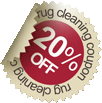
![]() FREE Pick up & Delivery
FREE Pick up & Delivery
![]() Non-Toxic Materials Used !
Non-Toxic Materials Used !
![]() We Use Green & Organic Solutions
We Use Green & Organic Solutions
![]() Complete Satisfaction Guaranteed !
Complete Satisfaction Guaranteed !
Call for our
24/7 EMERGENCY SERVICE
212-228-6300 Manhattan
718-222-9919 Brooklyn
718-875-5400 Queens
516-616-3945 Long Island
914-777-7334 Westchester
201-256-3334 New Jersey
203-683-3883 Connecticut
212-382-2525 NYC
212-382-2525 NYC
Turkish Rugs |
212-585-1900 |
The tradition of rug-making in Turkey is, by some accounts, just as old as Persia's. While it is impossible to know for sure whether Turkey or Persia was the first to make rugs, there is no denying the longstanding traditions that make Turkish rugs some of the most important in history. Turkish rugs are classified into four main types based on what materials were used to create them: wool on wool, wool on cotton, Viscose on cotton, and silk on silk. Turkish rugs are also classified by the region in which they were made. While every Turkish rug is a unique creation, they generally share characteristics depending on the region and historical era in which they were made.
The Turkish rug-making tradition has historically been strongest in Anatolia, but since the 16th century the number of rug-weaving centers in Turkey has greatly expanded to include many different cities. Some of the Turkish rugs produced in these regions have become known as Translyvanian rugs, because they can be found in many of the churches in Transylvania. In terms of color, Turkish rugs tend to use red and blue most often. Green, however, is considered to be a sacred color, and is usually reserved for prayer rugs. Turkish prayer rugs use geometric motifs and always have an arch or other shape which is used to point the Turkish rug toward Mecca during prayer.
Apart from prayer rugs, the motifs that have been prominently used in Turkish rugs have changed over time. In the 13th century, the Selcuk Turks used a combination of floral and geometric motifs. During the 14th century, animal figures began to be used as motifs. By the 15th century, Turkish rugs began to use a combination of animal figures and geometric patterns. In the 16th century, Turkish rugs were being commissioned for palaces, leading to a "palace style" of rug that included floral motifs with twisting branches and leaves. This style is still used in some of today's Turkish rugs.
If you own a Turkish rug, you own a small piece of history. Turkish rugs are known for their exceptional quality whether they were made in the 15th century or the 21st. This quality comes at a price, and at Oriental Rug Care NY we understand that you want to do everything possible to maintain and preserve the beauty of your Turkish rug. The Turkish rug care experts at Oriental Rug Care NY fully understand the weaving methods and materials used, and we are able to clean or restore any Turkish rug that is brought to us. If you need your Turkish rug cleaned or restored, look no further than the professionals at Oriental Rug Care NY. We accept shipping from all 50 states, and we also offer free pick-up and delivery for our local customers. The Turkish rug experts at Oriental Rug Care NY also offer emergency services should your rug become stained or suffer from damage from fire or water. Just call our toll-free number at 1-212-382-2525 any time of the day or night, seven days a week. We will send a team of professionals to your home to protect your Turkish rug from permanent damage. Oriental Rug Care NY is the place to go for all your Turkish rug cleaning and restoration needs.
Carpet Cleaning Articles, Tips, Tricks & Info
- Apartment Cleaning in NYC
- Area Rug Cleaning
- Bedbugs Treatment
- Best Carpet Cleaning
- Buy a Carpet 101
- Carpet Got Wet - Tips
- Carpet Installation NY
- Carpet Mold Removal
- Carpet Stain Removal Guide
- Carpet Mildew - Tips
- Carpet Sale - Tips
- Carpet Steam Cleaning
- Carpet Repair
- Choose Your Fine Rug Cleaners - How To
- Dry Carpet Cleaning
- Dust Mite Allergy Prevention
- Green Carpet Cleaning
- Fire & Smoke Damage
- Handmade Oriental Rug Cleaning NY
- Large Area Rug Cleaning
- Local Rug Cleaning
- Mattress Cleaning NYC
- Moth Rug Proofing
- Natural Rug Cleaning
- Non-Toxic Carpet Cleaning
- Old Rug Cleaning
- Oriental Rug Hand Wash
- Persian Rug Cleaning
- Rug - Dry Cleaning
- Rug Got Wet - Tips
- Rug Padding - Info
- Silk Rug Care - Info
- Tapestry Cleaning Company
- Upholstery Shampoo Cleaning
- Wall-to-Wall Carpet Info
- Water Damage Restoration
- Water Damage Mold Restoration NY
- Wool Carpet Cleaners
- Wool Rug Repair














 Copyright 2001 OrientalRugCareNY.com
Copyright 2001 OrientalRugCareNY.com